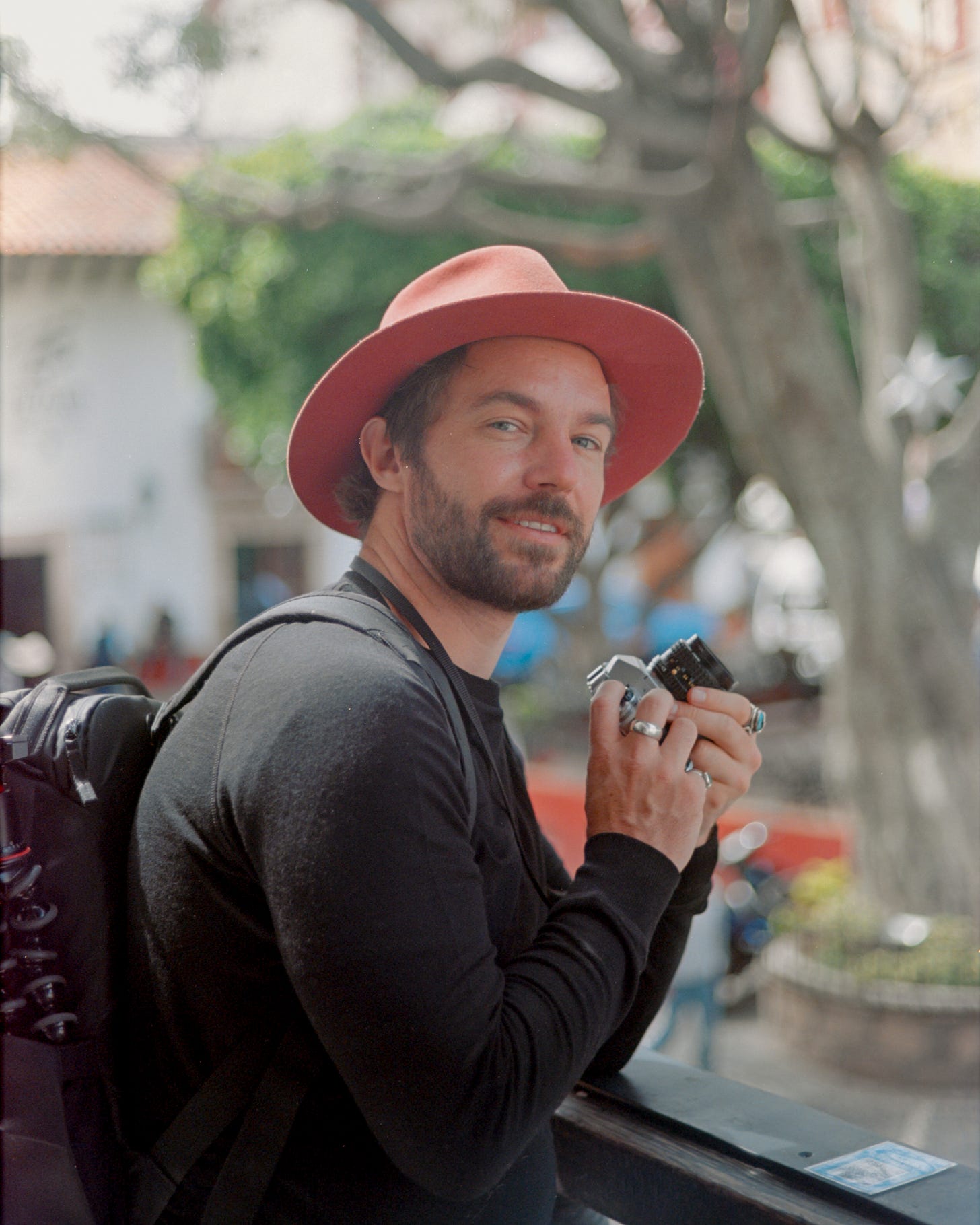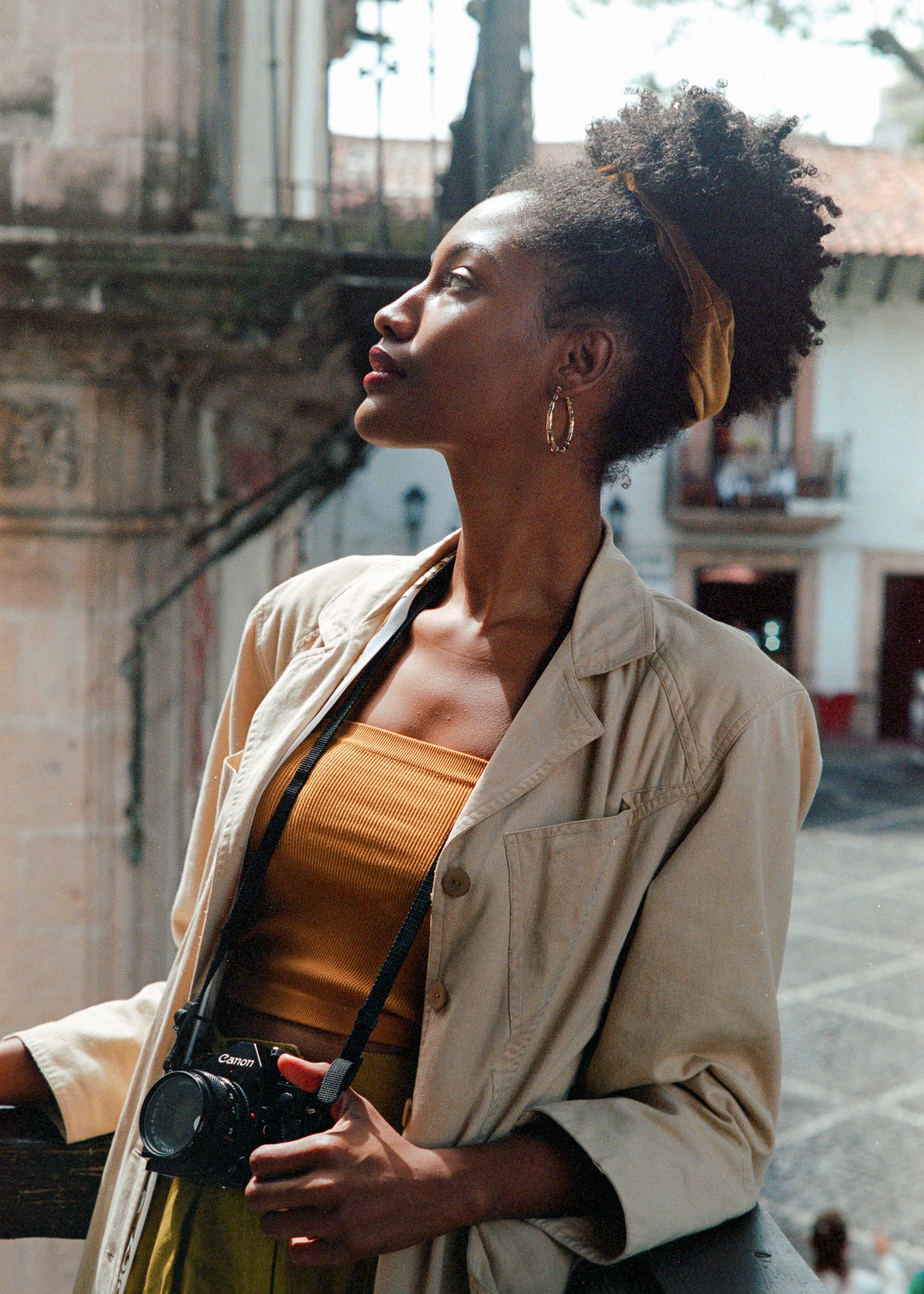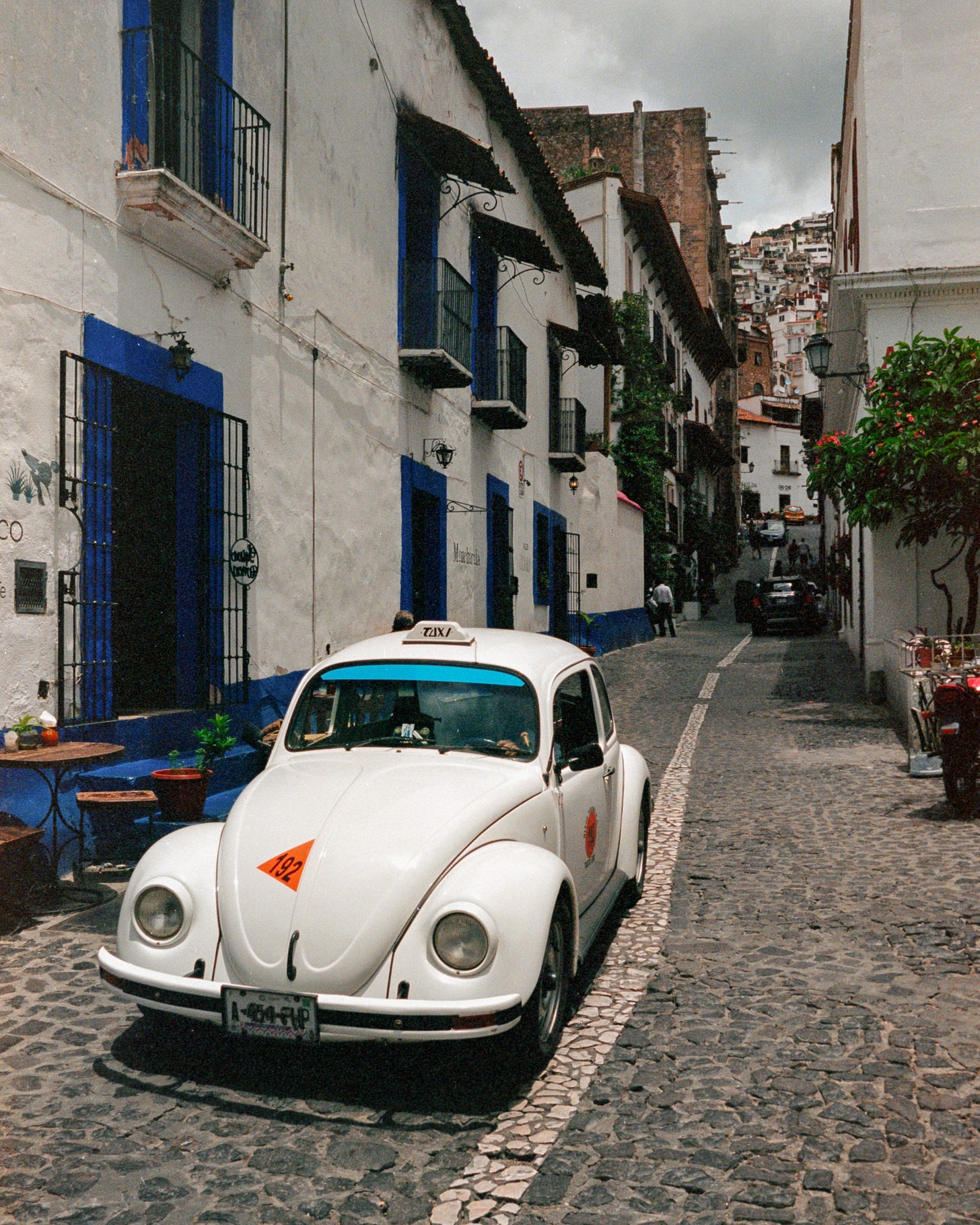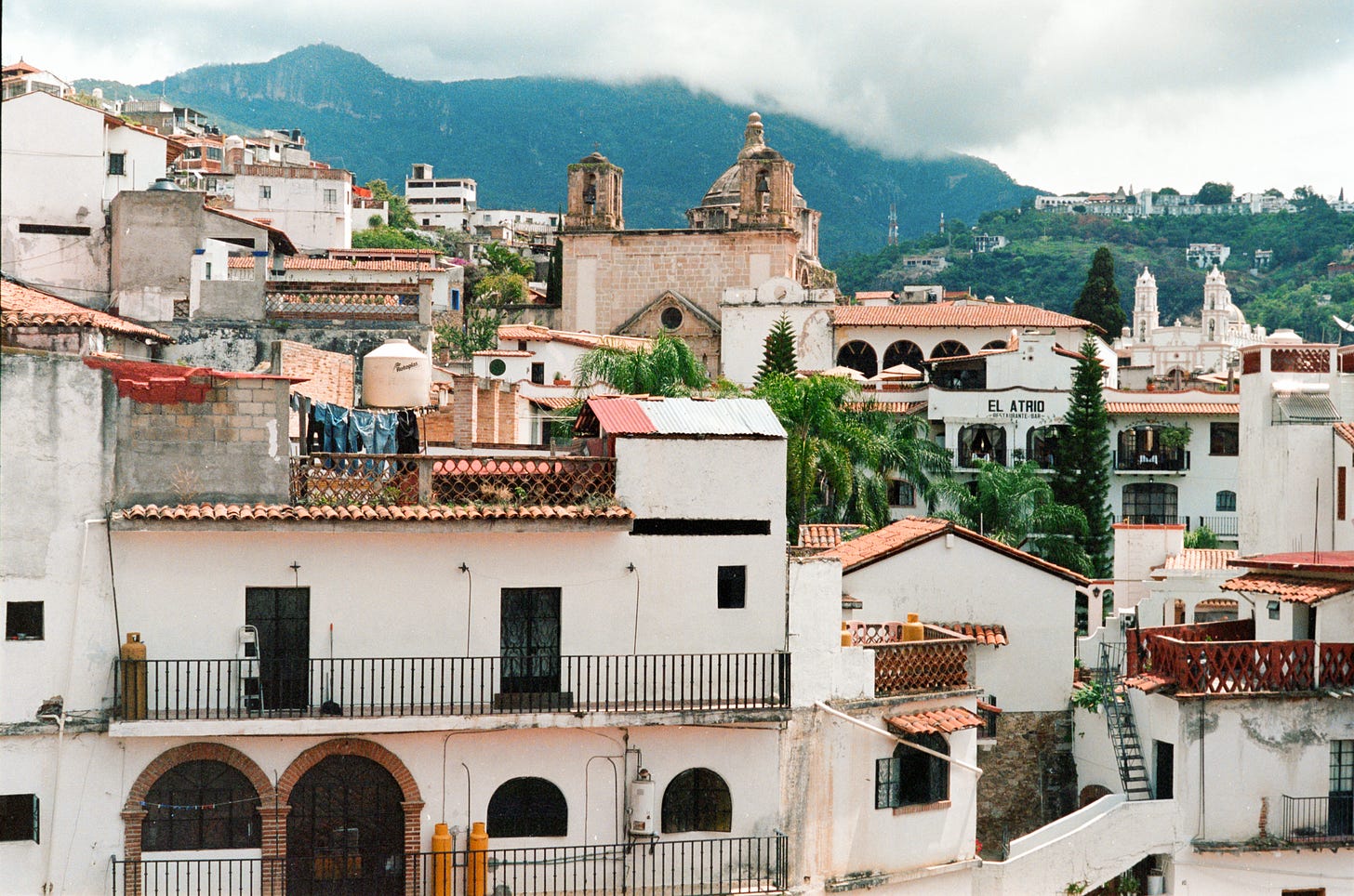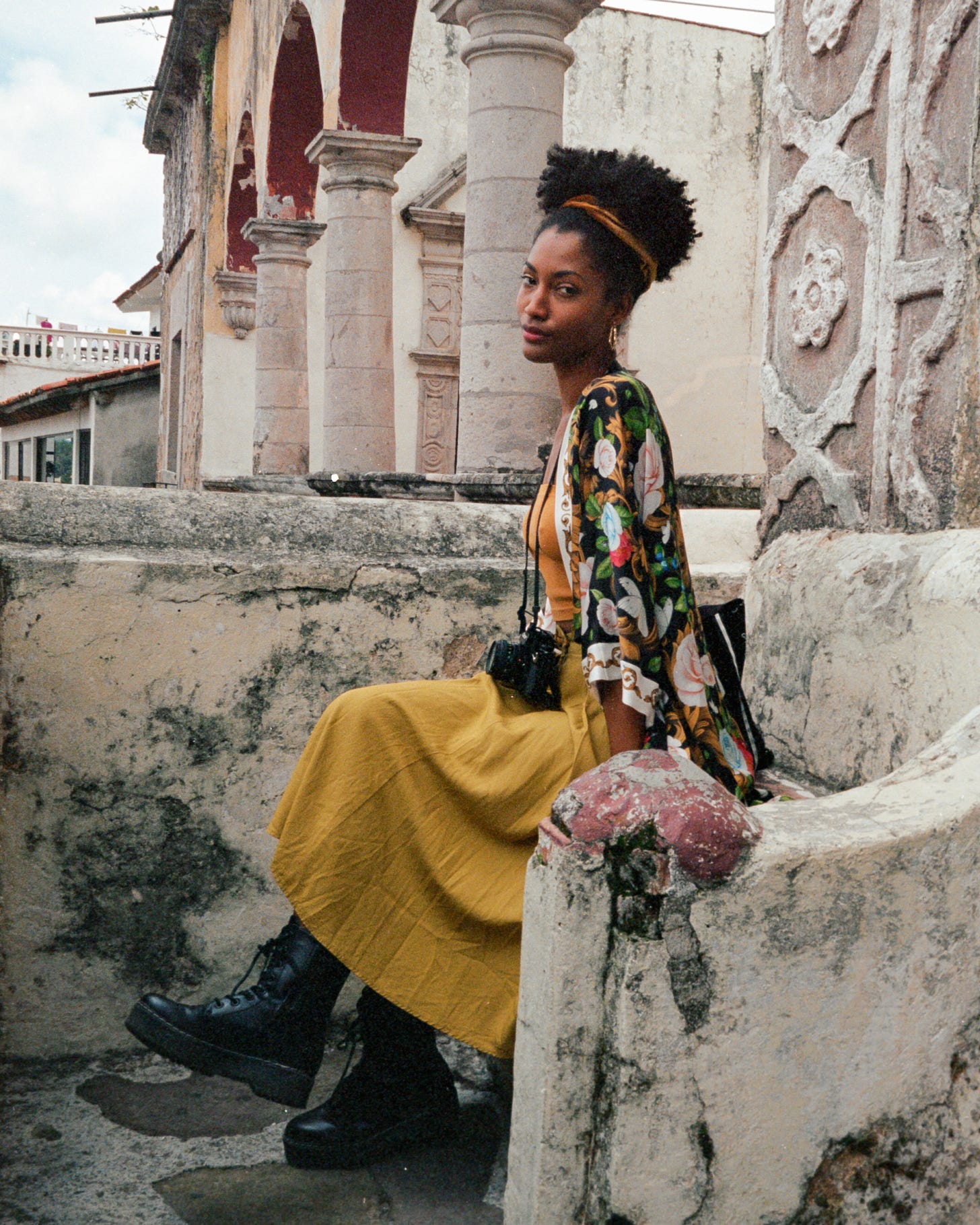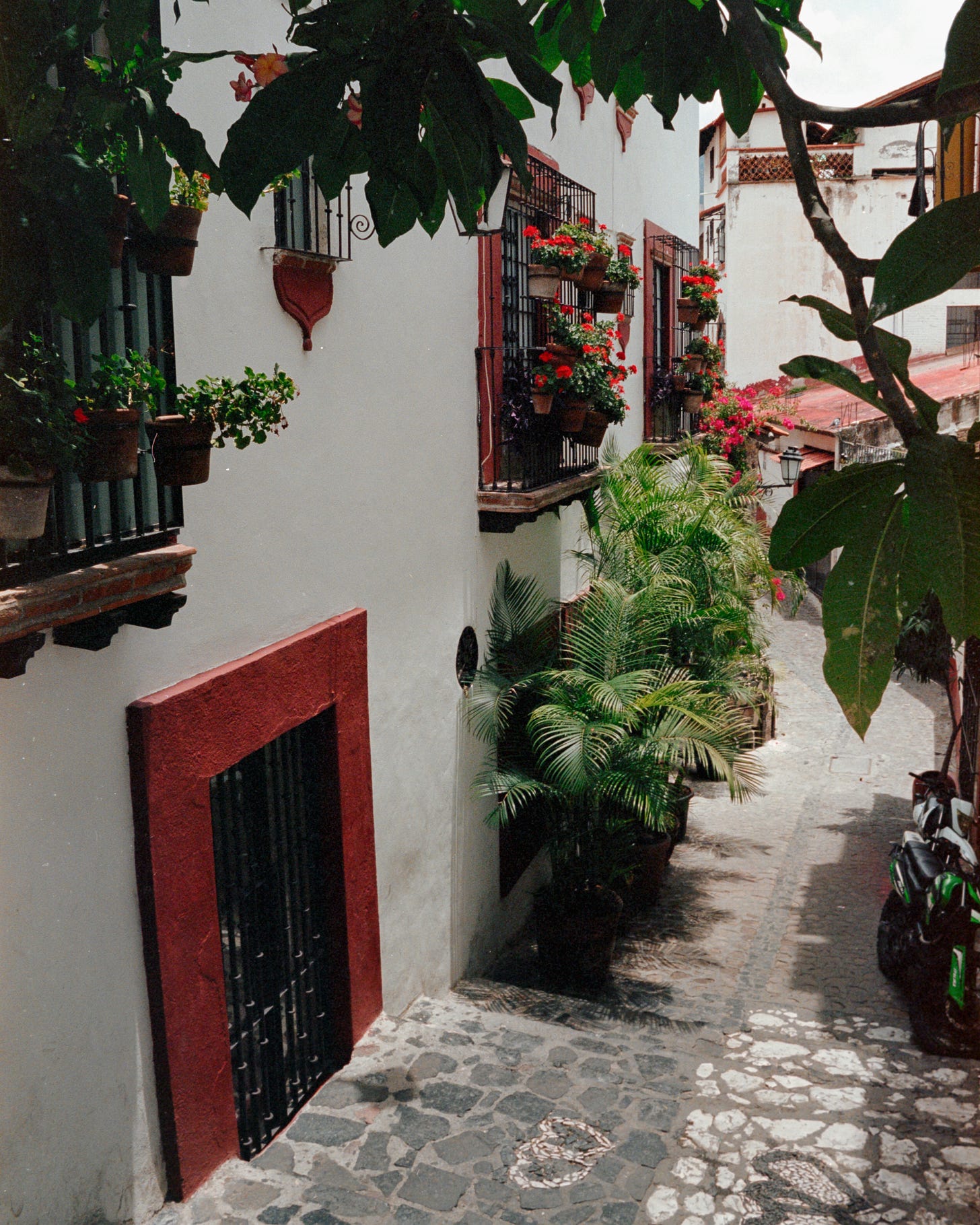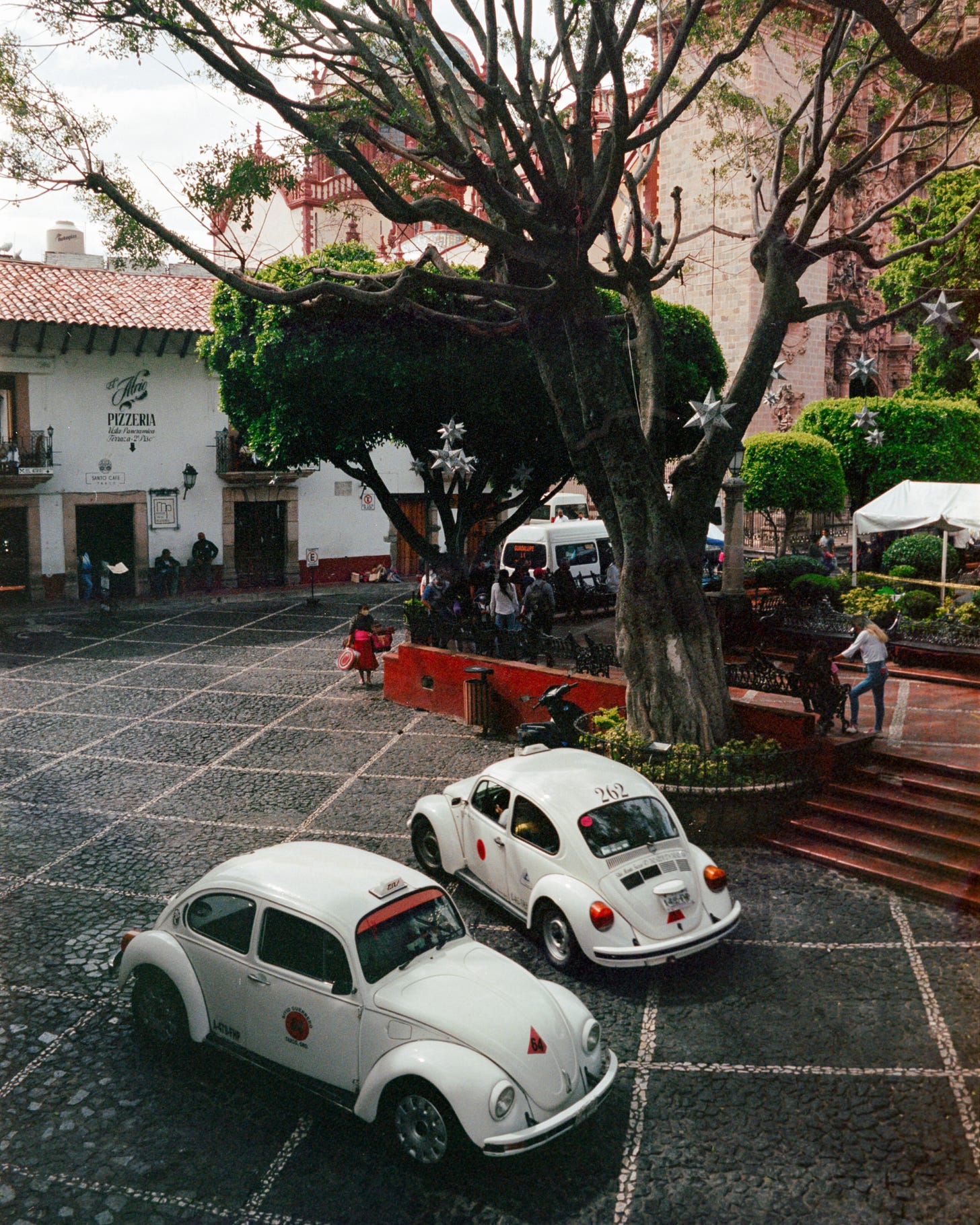This Viral Mexican Town is Worth a Visit
Taxco, Guerrero is the perfect escape from Mexico City
My interest in this small Mexican mining town started with TikTok. The images seemed too good to be true. White-washed colonial buildings with red clay rooftops. Cobble stoned streets plied by the iconic Volkswagon Beetles (known in Mexico as ‘vochos’). This centuries-old town seemed made for social media.
Luckily, it’s only a few hours away from the capital. And earlier this summer I decided to jump into my car and go check it out with my girlfriend Deshlee.
I’ve compiled photos, history, and a few recommendations to help you replicate our trip and share some of my film photography. I hope you enjoy!
The Birth of Taxco
The Spanish conquerors are often said to have been motivated by three things: God, gold, and glory. But in Mexico, they found less gold and more silver. And the central mountains around the capital are littered with opulent “Silver Cities” built upon the wealth discovered in the mines below: Guanajuato, Zacatecas, and San Luis Potosi. But perhaps none is as well preserved as tiny Taxco.
Taxco was the first Spanish mine in the Americas. The town was founded in the early days of the conquest, when Cortes noticed that the local Tlahuica tribe paid their taxes to Aztecs in gold and silver. He immediately set off in search of gold, creating the first mine where Taxco’s opulent cathedral now stands. Aqueducts, haciendas and forges were built, but when the veins seemed tapped out the Spanish eventually moved on to more promising places.
According to legend, Taxco’s fortunes changed when a horse accidentally scraped the ground with his hoof, revealing a rich vein of silver. News spread around the world and sparked another boom. Word even reached as far as France, where the de la Borda brothers decided to seek their fortune in Taxco. They arrived in 1708 and quickly took a leading role in developing the bustling town into one of the most beautiful in New Spain.
Clearly, the de la Borda brothers did not do the actual mining. The indigenous population did. And the conditions were horrible. Countless died from disease and overwork. The profits went to the Spanish overlords, who sent a fifth of their profit to the King. The rest was used to build buildings like the stunning Santa Prisca Church on the main square. It is said to be one of the finest in all of Latin America and was constructed in just 8 years. But no matter how much Jose de la Borda spent on the church, it’s impossible not to feel the ghosts of all those who died extracting the gold.
That said, Taxco is stunning. The boom created magnificent wealth and the subsequent bust spared it from further development. It now feels frozen in time, preserving a style of architecture lost even in much of Spain. The narrow, winding streets feel medieval, especially when watching the VW Bugs struggle to navigate the hairpin turns.
Where to Stay, Eat, and Shop
Stay: Hotel Los Arcos - Well-priced boutique hotel in a historic building with a gorgeous central courtyard. Very central and quiet. We paid about $50 for one night and barely spent any time in the hotel. Free parking. 10/10 would return.
Breakfast: Cafe Punto del Cielo - This national coffee chain nabbed a prime location on the main square. Grab a coffee and a pastry and sit on the chairs on the balcony while you plan out your day. You’ll need caffeine to power you up all the hills.
Lunch: Tia Calla - Famous restaurant on the main square that serves local green pozole. No frills and no substitutions (Deshlee is a vegan and struggled all over Taxco).
Dinner: Del Angel Inn Restaurant - Rooftop restaurant with a view of the whole city right beside the looming dome of the Santa Prisca Church. Taxco is not known as a culinary destination, but this place was good for a romantic dinner and not overly expensive. Try the pink mole, something you can’t get outside of this region.
Drinks: Bar Berta - This cute bar is built in a two-story house on the main plaza with a direct view of the church and decorated with painted masks from the state of Guerrero. Grab the seats on the downstairs balcony and order their house drink, La Berta - honey and tequila with lime - named after the bar’s owner from the 1930s.
Shopping: Tianguis de Plata - Skip the pricey boutiques and buy your silver in the silver market at the bottom of the hill. Make sure to look for the official stamp of quality: “.925,” which means it’s 92.5% pure silver.
Sightseeing & History
Santa Prisca Church - This opulent church was built by Jose de la Borda with profit from the mines. It was built in just 8 years and is one of the nicest in all of Latin America.
Casa de Cultura - Right next to the church is the de la Borda family home, built in 1759. It is largely unchanged and hosts art exhibitions.
Casa Humboldt - The famous German botanist stayed here for one night while surveying the country, and apparently that was enough for it to be named after him. The backyard is gorgeous and the museum was the most interesting one we saw.
Viewpoint: If you’re driving, you can stop before entering town to see a view of the entire valley here. Otherwise, take the cable cars to the mountaintop.
William Spratling Museum - America professor William Spratling helped revitalize Taxco in the 1930s when he founded the first modern silver workshop and forged the intricate styles now associated with the town. This museum holds his personal collection of pre-colombian relics.
Hacienda de Chorrillo - Built by Cortez’s men during the first silver boom, it’s now a language school. But you can still see the arches of the aqueduct nearby.
Getting to Taxco
Taxco is 185 km from Mexico City, or just under 3 hours by car. Leave Mexico City as early as possible to avoid traffic, which can double the journey.
If you rent a car, you can take the toll road via Cuernavaca. But driving through the town’s narrow roads is extremely challenging. You’d be better off taking a bus from Mexico City’s southern bus terminal, Taxqueña.
Once you’ve arrived, I suggest finding a central hotel and exploring on foot. The old town is built on a human scale and small enough to be seen in a single day. Saturday is the busiest day and midweek is pretty empty (but some places are closed).
We left Mexico City Friday afternoon, explored Taxco all day Saturday, then left for Cuernavaca at sunset. We stayed in the Hacienda de Cortes Saturday night and explored Cuernavaca the following day.
Below are some practical tips on Taxco. Feel free to save or share this with a friend.
Further Explorations
For more Mexico travel intel, subscribe to this newsletter if you haven’t already.
Next month I’ll be launching Mexico City guides for paying subscribers and for the rest of this month I’m offering 15% off annual subscriptions (click the button below).
What topics would you like to see me cover next? Comment below with questions, requests and feedback.




